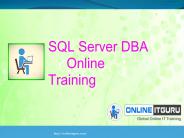SelfConfiguring Heterogeneous Server Clusters - PowerPoint PPT Presentation
1 / 30
Title:
SelfConfiguring Heterogeneous Server Clusters
Description:
Blades for power concerns. Repairs. Differentiation. www.darklab.rutgers.edu ... 4 1.2 MHz blade server. Modified distribution to nodes. 100 Mbps ethernet ... – PowerPoint PPT presentation
Number of Views:45
Avg rating:3.0/5.0
Title: SelfConfiguring Heterogeneous Server Clusters
1
Self-Configuring Heterogeneous Server Clusters
- Taliver Heath, Bruno Diniz, Enrique Carrera,
Wagner Meira Jr., and Ricardo Bianchini - (Presented by me)
2
Conserving Energy for Clusters
- Homogeneous clusters
- Solution Leave fewest number of nodes on to
satisfy requests - Heterogeneous clusters
- Which nodes?
- Request distributions?
3
Myth of Homogenous Clusters
- Clusters purchased for expandability
- Upgrades
- Blades for power concerns
- Repairs
- Differentiation
4
Heterogeneity in Clusters
- PC
- 800 MHz
- 70W idle
- 94W busy
- SCSI
- RDRAM
- FE links
- Blade
- 1200 MHz
- 40W idle
- First - 150W
- 46W busy
- Laptop IDE
- SDRAM
- GE and FE links
5
Approach
- Model application
- Performance
- Component utilizations
- Component power consumptions
- Optimize metric
- Ratio of power to performance
- Transform application
- Distribute requests, resources
- Dynamically reconfigure
6
Model Overview
- Models throughput by bottleneck analysis
- Models power with linear function
- Solves across all resources simultaneously ?
non-linear, multi-variable optimization
7
Model Variables
8
Client to Server Distribution
- Vector for distribution of requests
9
Probability of node i using resource r on machine
j
Machine 1 uses own resource
Machine 2 uses resource on machine 3
10
Utilization
- Per resource (r), per machine (i)
11
Solving for Throughput
12
Solving for Power
13
Micro-benchmarking
- For each component we need
- Maximum throughput
- Needs workload characteristics
- Power consumption for a given utilization
- We use several micro-benchmarks combined with
Least-Squares fitting
14
Using the Models
- Micro-benchmark
- Optimize metric using simulated annealing
- Generate distribution lookup table
- Throughput ? Configuration
15
Instantiation of Models
- Flash-like Web Server
- No cooperation
- Static requests
16
Validation of the Models
- 8 node cluster
- 4 - 800 MHz traditional PC
- 4 1.2 MHz blade server
- Modified distribution to nodes
- 100 Mbps ethernet connections
17
Validation
18
Experiment Setup
- 2 day trace from World Cup 98
- Accelerated by a factor of 20
19
Experiments Conducted
- Energy Oblivious
- All servers on
- Adaptive
- Assumes all machines identical
- Adjusts to match demand
- Model Adaptive
- Recognizes differences in nodes
- Adjusts to optimize metric (P/T)
20
Heterogeneous Oblivious
21
Heterogeneous Adaptive
22
Heterogeneous Model Adaptive
23
Results
24
Why Modeling Wins
25
Future Directions
- Dynamic Content
- CGI distributions
- Automatic corrections for errors
- Errors in machine specification
- Errors in application specification
- Best future node addition
- Different budget constraints
- Component-level control
26
Related Work
- Cluster power and energy Pinheiro01
- Request distribution Carrera01
- Load balancing in heterogeneous systems Zhou93
- Modeling clusters Maggs95
- Resource management in clusters Aron00
27
Conclusions
- Models are accurate
- Server configuration saves more energy
- Minor impact on performance
- Possibly design heterogeneous clusters from the
beginning
28
Questions?
29
For more information
- www.darklab.rutgers.edu
30
Modeling
- Knowledge required for accurate modeling
- Cluster details
- Application information
- Trace specifics
31
Combining Resources
32
Finding Resource Utilization
Utilization Vector
Non-local Utilization
33
PRESS server
- Cooperative web server
- Locality Conscious
- Developed by Carrera
- For this paper, cooperative nature disabled
- Distribution changes by alerting clients
34
Homogeneous Oblivious
35
Homogeneous Online Adaptive
36
Homogeneous Model Adaptive
37
Modeling for Clusters
38
Dynamic PRESS
- Idea evolves from Pinheiro01
- Algorithm
Periodically 1. Find required throughput of
cluster 2. Find optimal cluster configuration
for throughput 3. Reconfigure cluster































